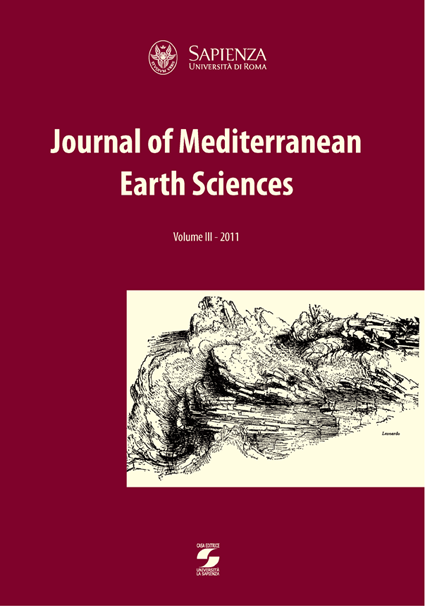Facies and architecture of the Lower Messinian turbidite lobe complexes from the Laga Basin (central Apennines, Italy)
DOI:
https://doi.org/10.3304/JMES.2011.004Abstract
Turbidite depositional lobes are the main architectural element of many ancient turbidite systems. On modern submarine fans, they constitute sandy accumulations with lobate planform forming as terminal splays at channel mouths. Several outcrop, marine geology and experimental studies have documented how facies, depositional geometries, and overall architecture of turbidite depositional lobes can be largely controlled by the host basin morphology. This study investigates the architecture of turbidite lobe complexes from the Southern Laga Basin (SLB; central Apennines, Italy) basing on detailed bed-by-bed correlations. During the Early Messinian, the SLB was part of a quickly deforming sector of the Apennine foreland basin system and hosted the deposition of a thick turbidite succession. The SLB’s size and morphology were controlled by the balance of tectonics and sedimentation. In such a context, SLB’s depositional lobes were topographically confined in an N-S trending dead-end trough delimited by thrust-related anticlines. Eventually, as turbidite sedimentation progressively smoothed out the seafloor morphology up to allow depositional lobes spilled to the E over the more external anticline.. Strike and dip sections across depositional lobes on an approximately 1700 m thick interval from the SLB’s Lower Messinian, enabled us to describe and compare the depositional architecture of turbidite complexes with different degree of basin confinement. Three main lobe sub-settings were recognized: i) a channel-lobe transition sector, where through-cross bedded and massive-to-crudely laminated beds form composite sandstone bodies which thicken down current; ii) a proximal lobe sector, where crudely laminated to planar-parallel laminated medium-fine sandstones constitute amalgamated to non amalgamated beds thinning out relatively rapidly down and across current; iii) an intermediate to distal (lobe fringe) sector characterized by deposition of thin-bedded turbidites, occasionally intercalated by debris-flow and slumping deposits. The comparison of depositional shapes revealed the dependency of sandstone body lenticularity on thickness (and, imlplicitly, depositional hierarchy), lobe sub-setting and degree of topographic confinement. At a higher hierarchical scale, the role of topographic confinement was even more important and brougth about two distinctive architectures of lobe complex. Confined stratigraphic complexes show a sheet-like architecture where compensation process is unimportant and lobes gently pinch and shale out toward basin margins, whilst unconfined ones are characterized by compensational stacking of lobes and a rather intricate facies distribution. Finally, the basin-fill scale architecture of SLB lobes was controlled by the interplay of thrusting and turbidite sedimentation, which modulated the degree of topographic confinement and caused the progressive eastward shift of the depocentre.Downloads
How to Cite
Massimiliano Moscatelli, M. M. S. M. (2014). Facies and architecture of the Lower Messinian turbidite lobe complexes from the Laga Basin (central Apennines, Italy). Journal of Mediterranean Earth Sciences, 3. https://doi.org/10.3304/JMES.2011.004
Issue
Section
Articles
License
The submission has not been previously published, nor is it before another journal for consideration (or an explanation has been provided in Comments to the Editor).


